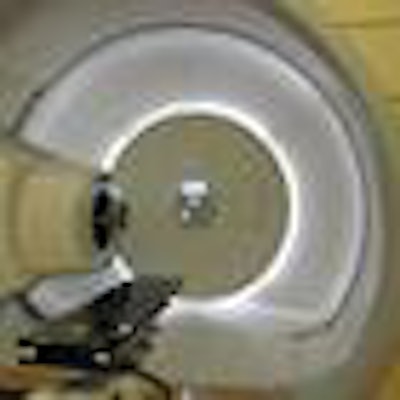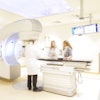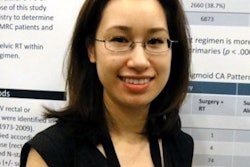
Proton therapy is currently used to treat brain, spine, and prostate cancers, as well as many pediatric tumors. Earlier this month, experts from some of the leading U.S. cancer centers gathered to discuss the emerging role of proton therapy in breast cancer.
Standard radiotherapy for breast cancer holds the risk of long-term side effects due to low-level irradiation of the heart and lungs. This risk may be minimized if proton therapy is used.
 Dr. William Hartsell, medical director of the CDH Proton Center. Image courtesy of ProCure.
Dr. William Hartsell, medical director of the CDH Proton Center. Image courtesy of ProCure.
The two-day workshop sponsored by ProCure Treatment Centers was attended by about 30 physicians -- mostly radiation oncologists, though not all from proton centers -- as well as a few medical physicists.
"We primarily dealt with clinical issues, specifically, what clinical trials would be appropriate," explained Dr. William Hartsell, medical director of the CDH Proton Center in Warrenville, IL. "There were also presentations from physicists about the technical issues of treating breast cancer."
"We talked about potential advantages and downsides, and the problems of performing the treatment," he told medicalphysicsweb. "It's good to get perspectives from people other than those already using proton therapy. Everyone agreed that, in certain circumstances, treating with protons makes more sense."
Talking points
While most proton therapy centers already have the capability to perform breast cancer treatments, some technical challenges remain. These include, for example, dealing effectively with respiratory motion, minimizing skin dose, and ensuring that the breast tissue is in exactly the same position for each treatment, as most patients are treated more than once.
The attendees also considered which treatment position is preferable. For example, sometimes it's advantageous to treat the patient lying on her front, which pulls the breast tissue away from the heart, lung, and chest wall. In other cases, it's better to treat the patient lying on her side.
 The gantry rotates around the patient to deliver treatment from different angles, allowing the physician to precisely target the tumor site. Photo taken at the ProCure Proton Therapy Center in Oklahoma City. Image courtesy of ProCure.
The gantry rotates around the patient to deliver treatment from different angles, allowing the physician to precisely target the tumor site. Photo taken at the ProCure Proton Therapy Center in Oklahoma City. Image courtesy of ProCure.
Another key issue, particularly when treating young women, is how to gauge the relative success of proton therapy when side effects may not manifest until many years later. "We need to determine what we can look at now that will tell us whether we've been successful, whether we can prevent people from having heart problems 20 or 30 years down the line," Hartsell explained.
The workshop participants considered two groups of breast cancer patients. For women with more advanced breast cancer, where the tumor is larger than 5 cm or multiple lymph nodes are involved, they agreed that proton therapy is a suitable option. The next step is to figure out how to design clinical studies to prove this premise.
Hartsell noted that there was more discussion regarding women with earlier stage breast cancer, and whether, in some situations, proton therapy would improve upon standard treatments.
"There are a lot of good treatments for early-stage breast cancer," he said. "We clearly recognize that protons would not be the best for all these patients, and we're trying to figure out in which circumstances protons would be more appropriate."
Clinical trials
Currently, there are two trials in progress examining proton therapy for breast cancer. A study at Loma Linda University Medical Center, running for five years to date, is evaluating women with early-stage breast cancer. At Massachusetts General Hospital, a study looking at high-risk patients has been running for two years, with about 25 patients treated to date.
The CDH Proton Center will also be opening two trials in the next few months, in collaboration with ProCure centers in Oklahoma City and Somerset, NJ -- one for women with advanced breast tumors and the other including women with early-stage tumors. Hartsell noted that these trials will in part be guided by input from the Loma Linda and Mass General representatives who attended the workshop.
"Part of the discussions we had looked at how we can compare data from these studies to make sure we are answering the questions appropriately," he said. "There were certain end points in our study that others didn't have, and there were certain end points in their studies that we didn't have. One of the best parts of this collaboration was that we identified small things missing that we can improve going forward."
The workshop attendees concluded that there is definitely promise for proton therapy in certain breast cancer cases, but that more research is needed to define such situations. "One of the main outcomes from the meeting was that we need to do collaborative research to try to answer these questions," said Hartsell. "By pooling resources we can get the answers more quickly and get a better handle on how best to treat patients."
© IOP Publishing Limited. Republished with permission from medicalphysicsweb, a community website covering fundamental research and emerging technologies in medical imaging and radiation therapy.



















